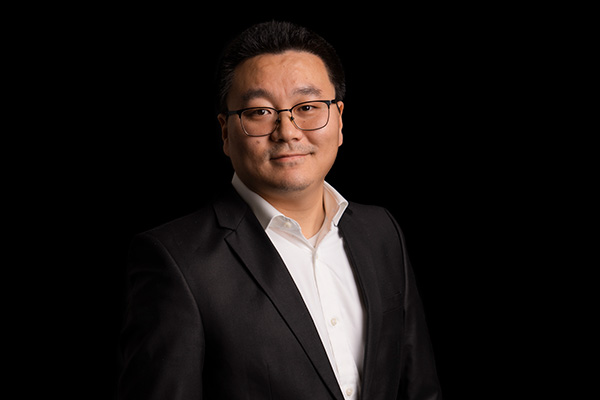You Zhou
Research leader

Project title
Unravel the mystery within the first microsecond of the little Big Bang
What is your project about?
In the first microseconds after the Big Bang, the early Universe consisted mainly of quarks and gluons: quark-gluon plasma (QGP). By colliding lead nuclei at ultrarelativistic energies in the Large Hadron Collider (LHC) at CERN, we can recreate essential features of the early Universe in a small "Big Bang" and study its properties under controlled conditions. The most significant uncertainty of the QGP study comes from the unknown initial conditions that set the stage for the QGP dynamic evolution. The proposed project will develop a methodology for studying new particle correlations. The pioneering measurements will give direct access to the unknown initial conditions and unravel the mystery of the first microsecond of the Big Bang.
How did you become interested in your particular field of research?
In 2005 I read an article in Scientific American about how collisions between heavy ions can mimic the Big Bang and thus recreate conditions in the early universe. I found this idea very exciting and chose to continue my master's project in heavy-ion physics. This interest was later strengthened when I realized that we could not only recreate Quark-Gluon plasma as it was in the early universe but also investigate its properties in detail. The way the state of quark-gluon plasma expands shows that quark-gluon plasma can be thought of as a liquid with very low viscosity. The properties of this particular fluid and the time evolution of the properties must be understood.
What are the scientific challenges and perspectives in your project?
There are two major challenges in my project. First, the analysis is based on sophisticated multi-particle correlations that rely on developing a new computational algorithm. Such an algorithm should provide fast calculations and also precise experimental corrections, which are highly complicated. Secondly, a critical working program in the proposed project tightly links to the discovery of a new quantum matter whose existence was predicated by the most advanced theory but has not been discovered in any experiment so far.
What is your estimate of the impact, which your project may have to society in the long term?
The wide society often asks what matter was at the beginning of the Universe, what was the properties of this primordial matter and how did this matter evolve. Clearly, understanding the physics of the early Universe is itself a major cultural challenge. Techniques developed in and around the proposed project at CERN that Denmark co-owns can be used in many applications and within other research branches.
Which impact do you expect the Sapere Aude programme will have on your career as a researcher?
This Sapere Aude starting grant will help me maintain our strong efforts in studying the QGP matter and allow potential breakthrough discovery of the new state of quantum matter. The support from the DFF-Sapere Aude grant will also ensure a substantial continuing central role of my research group in studying the time evolution of the QGP matter. It makes it possible to hire Ph.D. students with whom we will answer the expansion of the Early Universe in the first microsecond. The DFF-Sapere Aude grant will significantly boost my career. There is also no doubt that it can pave the way for other future grants, such as an ERC grant.
Background and personal life
I am married to a wonderful Chinese woman with whom I have two children (a 8 year old girl and 5 year old boy). I spend most of my free time playing with my children (in particular LEGO), the most important thing in my life. I am very interested in beer, both culturally and in taste. Perhaps this is the reason for my research into the quark-gluon plasma: the perfect fluid of the early universe.
View all research leaders here
Research institution
University of Copenhagen
Research field
Physics
City of your current residence
Copenhagen
High school
Huai'An No 1 middle school
